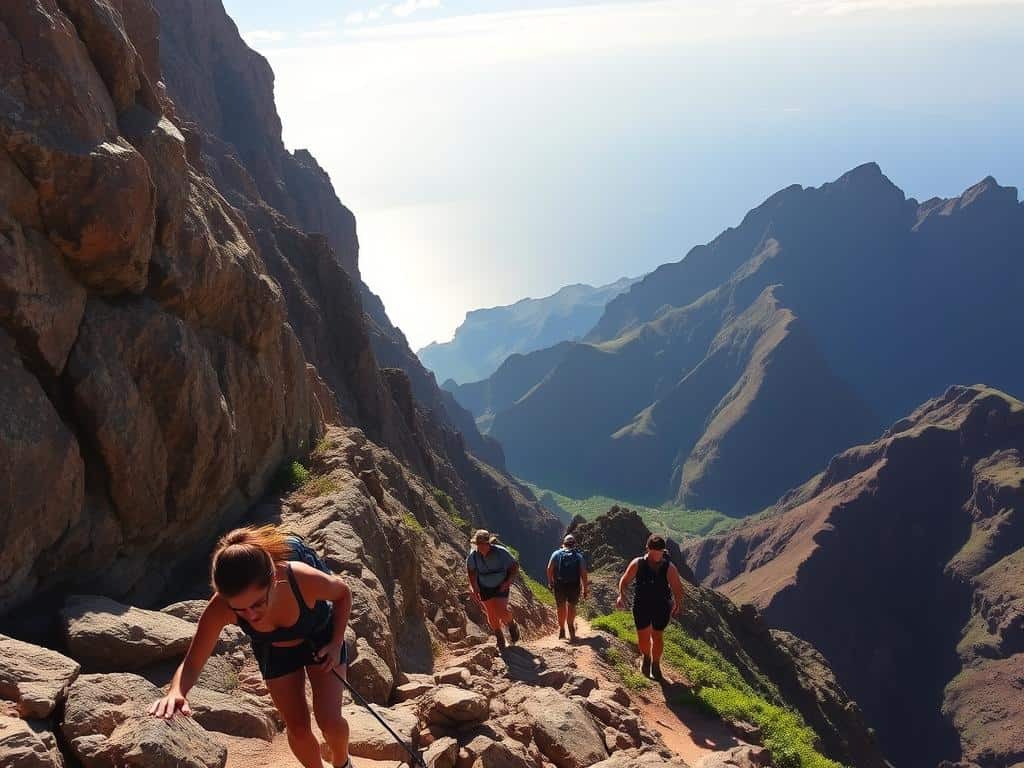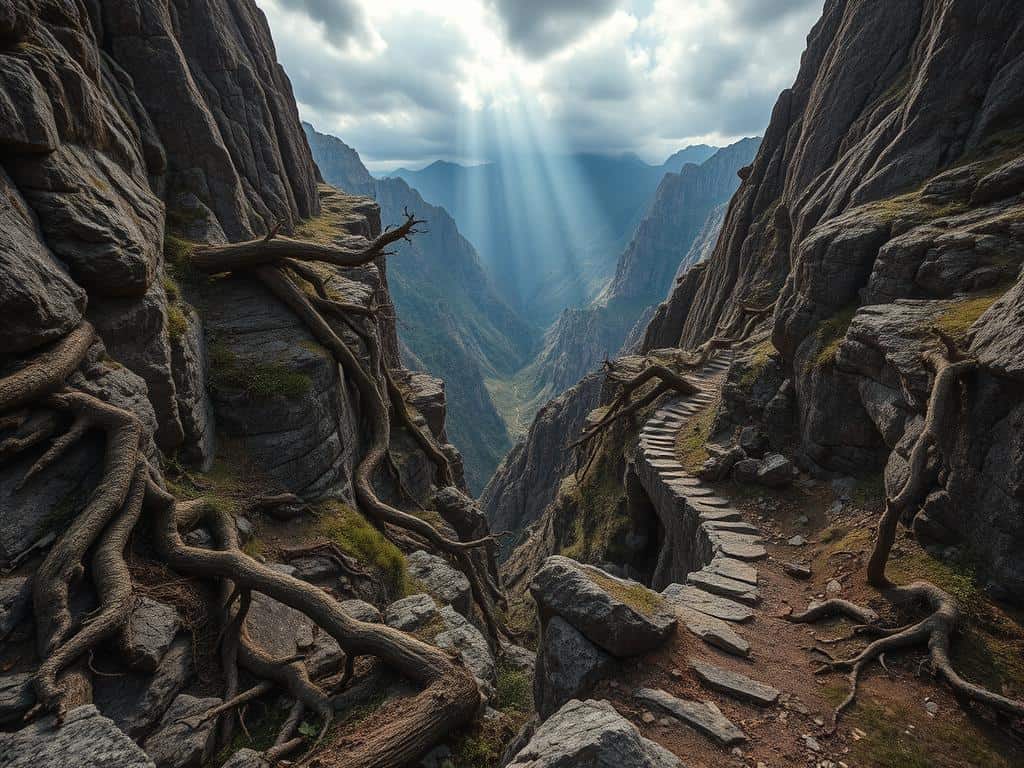Did you know over 90 hikers have lost their lives on the Camp Muir route on Mount Rainier? Hiking is often seen as a peaceful activity with beautiful views. But some trails are so dangerous, they seem like they should be off-limits. These trails attract thrill-seekers who don’t always know the dangers they face.
Trails like Angel’s Landing in Zion National Park and Yosemite’s Half Dome are deadly. They remind us that nature can be both stunning and deadly. This article aims to highlight the dangers of extreme hiking trails, keeping safety in mind for all adventurers. Get ready for a thrilling journey through these treacherous terrains.
Key Takeaways
- Dangerous hiking trails can claim lives if precautions are not taken.
- Angel’s Landing has seen multiple fatalities, highlighting its risks.
- The importance of adequate preparation before tackling extreme hikes cannot be overstated.
- Understanding the relative danger ratings helps gauge the risks involved.
- Awareness of weather conditions is critical for safety on these treks.
The Allure of Dangerous Trails
Dangerous trails attract many adventurers looking for a thrill. They promise breathtaking views and an adrenaline rush. I find the unique challenges of these hikes rewarding.
Whether it’s a steep incline or treacherous terrain, the reward is worth it. Hikers also seek these paths to escape daily routines.
Why Do Hikers Take Risks?
Many factors draw hikers to risky trails. The thrill of adventure is a big pull. Newcomers are often inspired by daring stories from the hiking community.
These tales spark wonder about the wilderness. They also highlight the personal growth from overcoming challenges. Yet, it’s important to manage risks and understand hiking dangers.
Understanding Relative Danger Ratings
Knowing the danger ratings of trails is key to safe hiking. Trails are rated on a scale from Moderate to Severe risks. Factors like remoteness and weather are considered.
For example, the Kalalau Trail in Hawaii is known for its cliffs. The Bright Angel Trail is risky due to dehydration in summer heat. By understanding these ratings, I can prepare better and stay safe.
Extreme Hiking Trails that Challenge Even the Best
For those who love extreme trekking, some trails are truly unforgettable. Angel’s Landing in Zion National Park and the Kalalau Trail on Kauai, Hawaii, are famous for their beauty and danger. These hikes offer a unique experience that both amazes and scares even the most experienced hikers.
Angel’s Landing in Zion National Park
Angel’s Landing is known for its stunning views, but it’s also very risky. At least 13 people have died here, mostly from falls. The first parts of the hike are easy, but the last bit is very scary.
The trail ends on a narrow ridge with steep drops on both sides. This makes the hike both exciting and dangerous for those who seek adventure and beauty.
Kalalau Trail on Kauai, Hawaii
The Kalalau Trail is a different kind of challenge. It’s an 11-mile hike along Kauai’s Na Pali Coast. The trail is famous for its beauty and dangers, like flash floods and bad weather.
Despite the risks, the Kalalau Trail is a must-see for outdoor lovers. It’s a test of courage and skill, but the rewards are worth it.

Warnings and Safety on Dangerous Hikes
When tackling perilous hiking trails, knowing hiking essentials is key for safe adventures. Each hike has its own challenges, needing thorough preparation for safety. Many accidents happen because people overestimate their abilities or underestimate trail difficulties.
Being ready for anything makes the journey more enjoyable and safer.
Essential Gear for Extreme Hiking
Wearing sturdy rubber-soled hiking boots is important for stability on rough terrains. For easier paths, tennis shoes are fine. Always carry the 10 Essentials, like water and navigation tools, for hiking preparedness.
Remember to bring extra food for at least a day. Altitude sickness is a big risk above 8,000 feet. Don’t forget to stay hydrated, as hot weather can cause dehydration quickly.
Importance of Weather Awareness
Knowing the weather is vital for outdoor safety. Sudden storms or cold drops can increase risks. Always check local forecasts before you go.
Tides can affect coastal hikes, changing every six hours. Plan your return time wisely, doubling it if the hike is uphill. Leave a trip plan with someone trusted, including your route and expected return time.
With careful preparation and awareness of your surroundings, your hike is more likely to be safe and successful.
Conclusion
Extreme hiking trails mix adventure and adrenaline, giving us thrilling experiences. But, we must remember the risks are real. With the right advice, I’ve learned to be cautious and prepared.
Safety is key when we’re out on these trails. Knowing the dangers, like steep drops and unpredictable weather, is important. Having the right gear and training helps us tackle these adventures safely. This way, we can enjoy the journey without risking our health.
Every hiker must be responsible for their own safety. With good planning, knowledge, and respect for nature, extreme hiking can be unforgettable. As I get ready for the next adventure, I remember the true value of outdoor exploration. It’s not just about the thrill of the climb, but also about coming home safe to share our stories.



